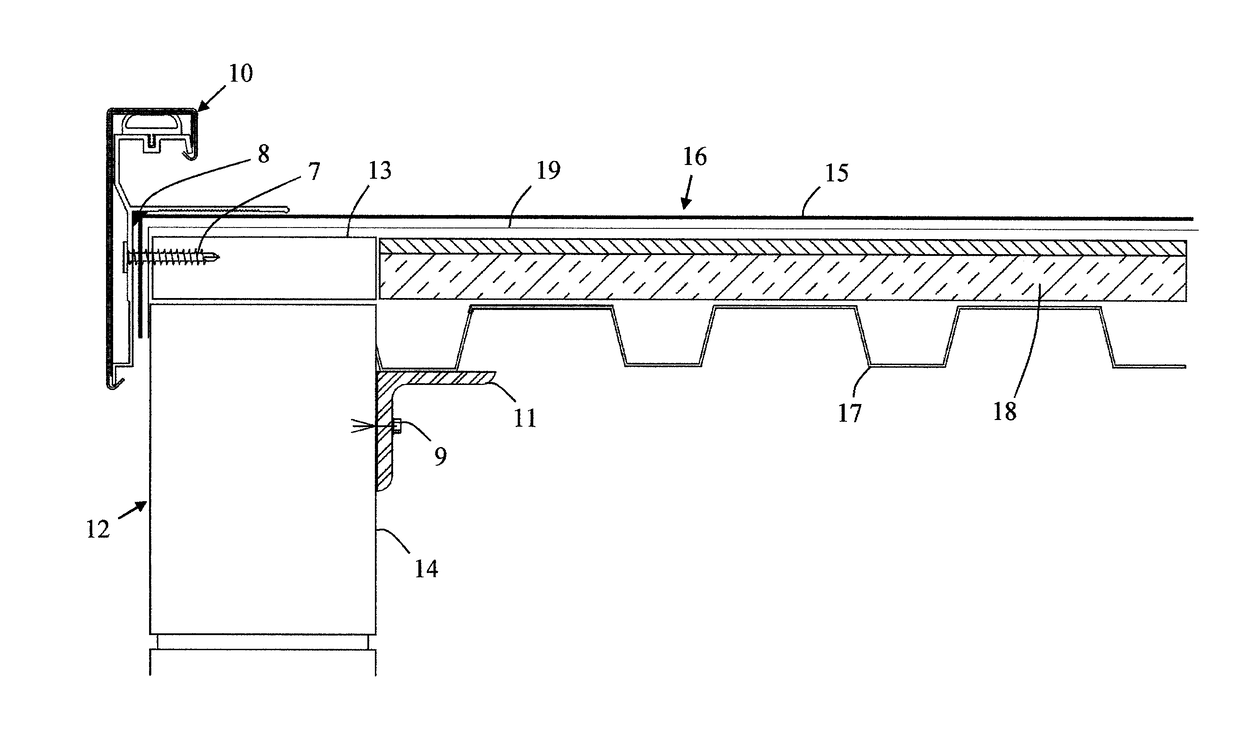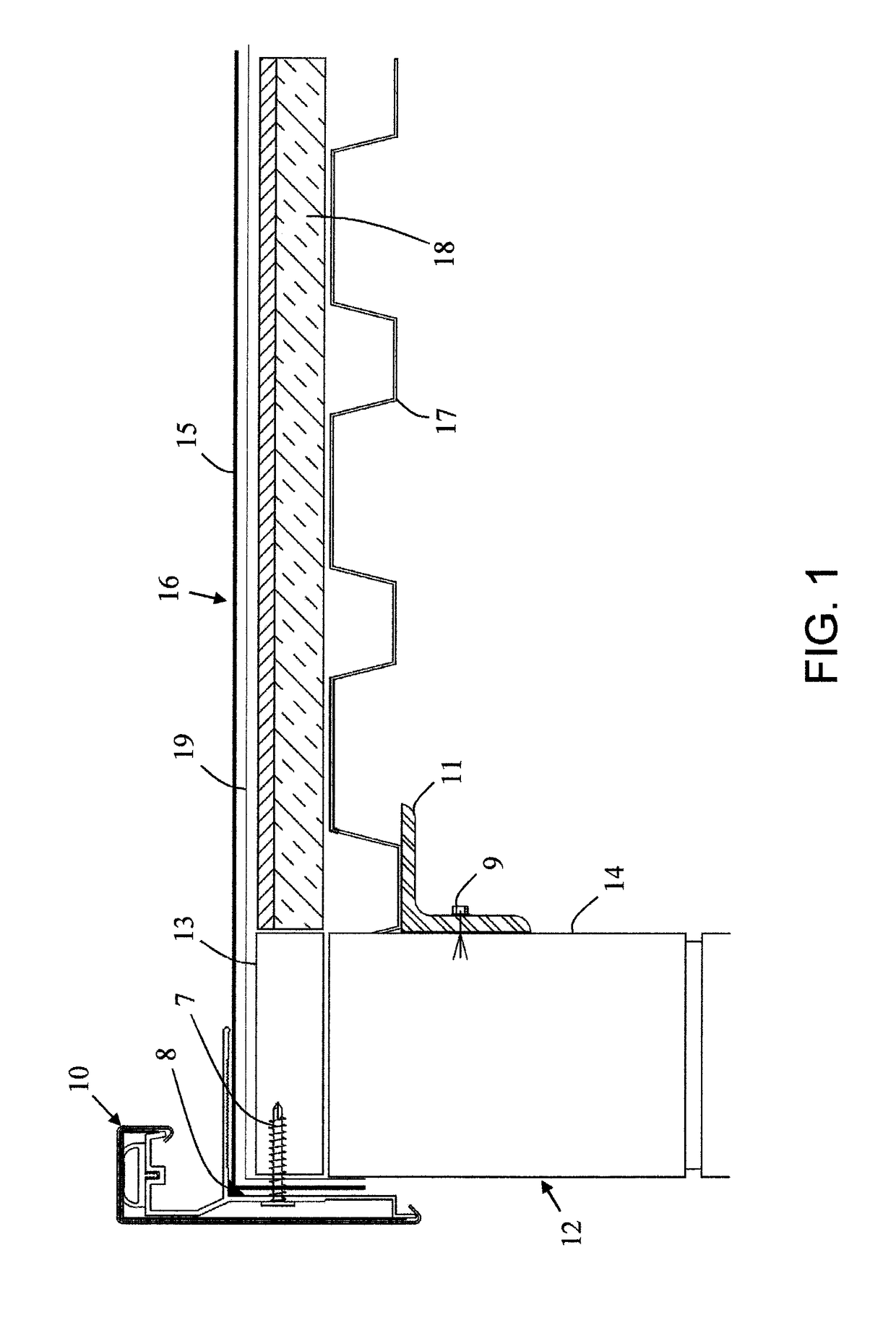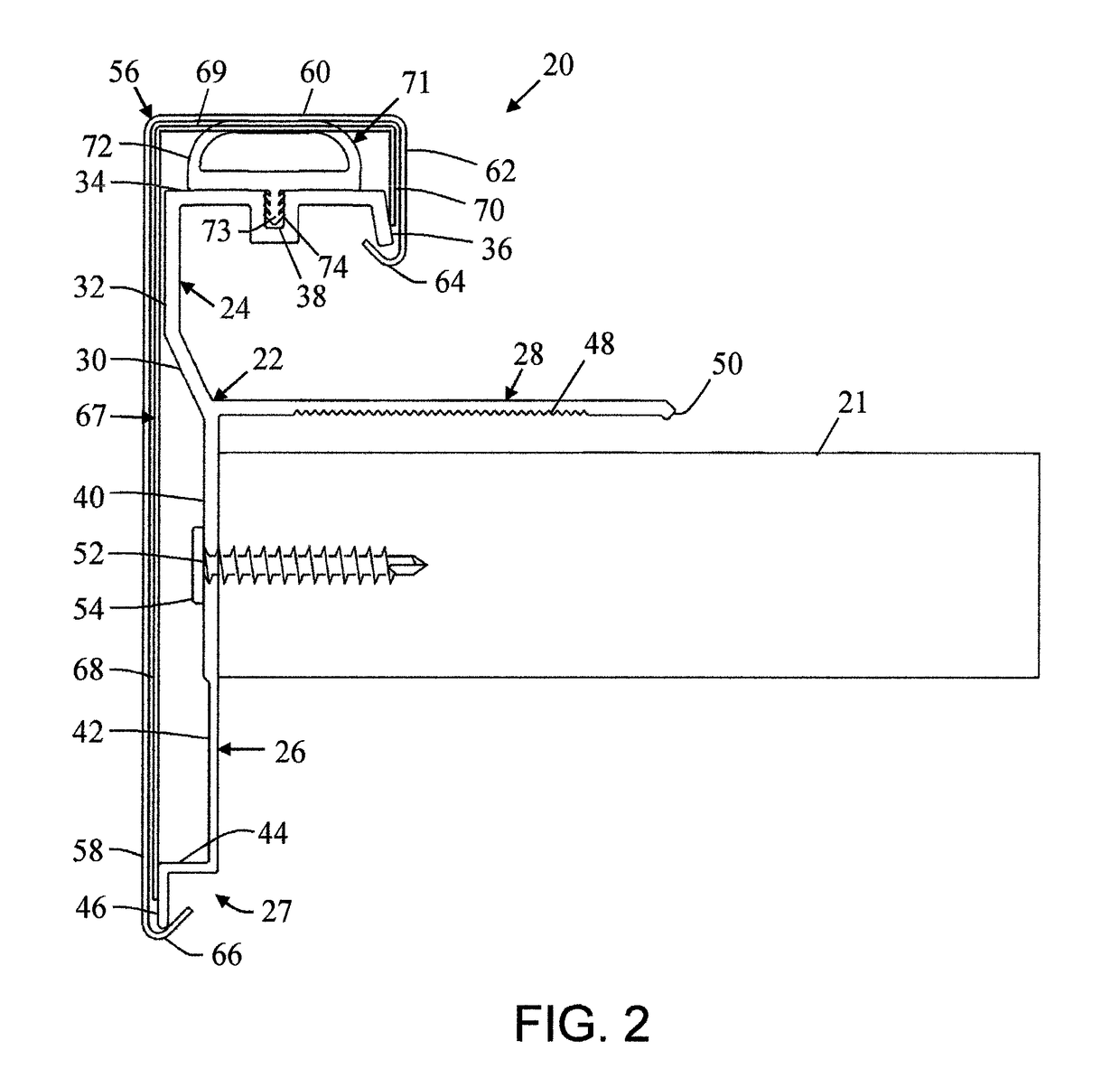Edge Metal System
a metal system and edge technology, applied in the direction of roof coverings, roofs, constructions, etc., can solve the problems of metal springs transferring too much tension to the face of metal coverings, appearance is not aesthetically pleasing, etc., to achieve and easy and convenient installation and/or use
- Summary
- Abstract
- Description
- Claims
- Application Information
AI Technical Summary
Benefits of technology
Problems solved by technology
Method used
Image
Examples
Embodiment Construction
[0044]Referring now to the drawings, wherein the showings are for the purpose of illustrating at least one non-limiting embodiment of the invention only and not for the purpose of limiting the invention, FIGS. 1-11 illustrate various non-limiting roof edging systems in accordance with the present invention.
[0045]Referring now to FIG. 1, there is illustrated a roof edging system 10 connected to a building 12 having a sidewall 14 and a roof 16. One non-limiting roof 16 of building 12 includes multiple layers, such as, for example, a metal deck 17, insulation 18, base ply 19, and / or a roofing membrane 15. A bracket 11 can be used to support the one or more components of the roof 16 at or near the sidewall 14. A fastener 9 (e.g., bolt, screw, nail, clip, etc.) can be used to secure the bracket 11 to the sidewall 14. However, other or alternative connection means can be used (e.g., adhesives, etc.). Generally, roofing membrane 15 covers one or more components of the roof 16 and extends o...
PUM
 Login to View More
Login to View More Abstract
Description
Claims
Application Information
 Login to View More
Login to View More - R&D
- Intellectual Property
- Life Sciences
- Materials
- Tech Scout
- Unparalleled Data Quality
- Higher Quality Content
- 60% Fewer Hallucinations
Browse by: Latest US Patents, China's latest patents, Technical Efficacy Thesaurus, Application Domain, Technology Topic, Popular Technical Reports.
© 2025 PatSnap. All rights reserved.Legal|Privacy policy|Modern Slavery Act Transparency Statement|Sitemap|About US| Contact US: help@patsnap.com



